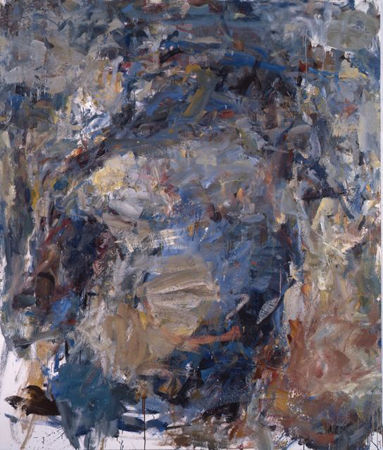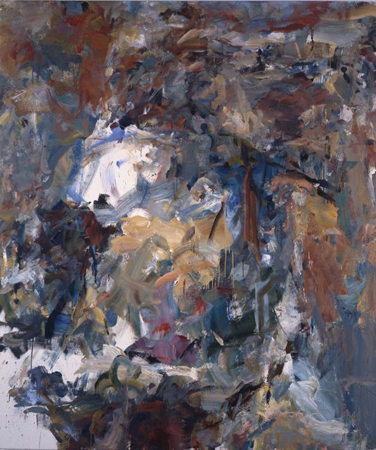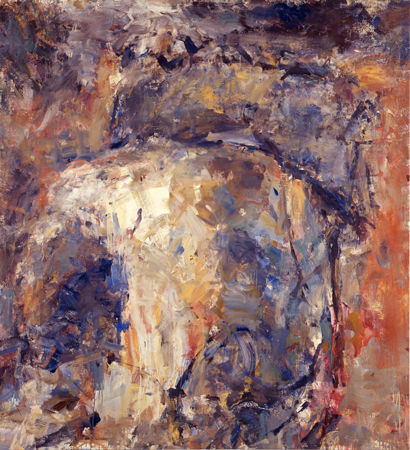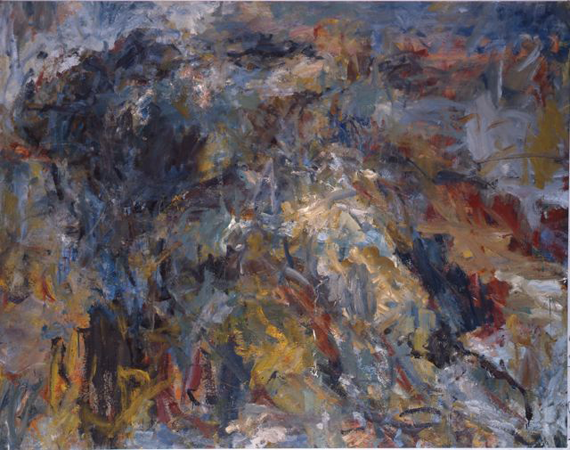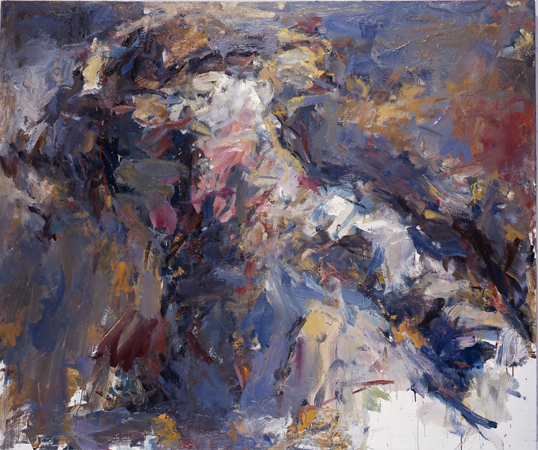Essay
Lindsay Blair
"When you enter the world of the canvas it's raw, you're vulnerable. You're on your own. I really like that - you and your history."
The painting of Lex Braes speak of a struggle. They are not easy paintings - they do not yield up their meaning immediately but they exert a fascination, a force. They are large, vigorous images made up of rough, loose marks and shapes which appear and vanish. Rich in subtlety and emotional commitment. Braes' canvases look as though they have evolved rather than been constructed and as such they have the feel of nature. There are not simple reductive patternings but meditative, ambiguous, complex, questioning paintings which draw you into a dialogue. They communicate more the abstract contours of music than the semantics of narrative.
Lex Braes' work has evolved with considerable consistency of purpose and imagery; the meshing of the figure with its environment is a development from the portrait paintings which comprise the body of his earlier work. The portraits were large, heroic, painterly and evocative; if the representational aspect, the "literal" has been abandoned in favour of a more complex and ambiguous idiom, much of the monolithic, confrontational pull of the portraits has been retained in the recent "Ruhe" paintings.
"Abstract art" is an imprecise term to apply to Braes' work as the figure is always tenaciously held onto. However, the genre "figure painting" is a tradition to which his work could only obliquely be related. You have to hunt for the figure in his painting space. In his present exhibition he gives us guiding principles via his drawings. The drawings are sparer and because they use fewer marks allow us an easier entry. Braes himself speaks of Mondrian, Malevich, Giacometti, Bacon and Michaux as being painters from the European tradition who have influenced him and thus inform his work. When he speaks of Bacon, an aspect he has considered deeply is the "brutality of fact". Braes speaks of how Bacon deals with brutality and at one and the same time addresses the life-giving force of art itself. This is an issue central to the development of Braes' work, which has moved from images of public figures often taken from newspapers and always directed by moral conviction, to images of people he knows personally - a conscious shift from the political to the psychological. Braes searches in his most recent work for a raw experience of intimacy and beauty.
In respect to Mondrian, an "abstract" influence upon Braes, the issue of pure space arises. Indeed, Mondrian did, and Braes does face the same immediate problem: how to create pure spaces in the urban jungle of New York City. "You have to be clear in your head and then you can paint anywhere." Braes insists. Both artists draw upon their childhood ima gery and mood: their rural utopia. This sounds a strange paradox for Braes who comes from Glasgow, the industrial capital of Scotland. Braes, however, recalls looking out onto the open spaces from the outskirts of the city; there he remembers the confrontation with the environment, and this we feel strongly in his work: the raw Scottish elements, the wind and the rain, the unforgiving climate and the harsh, tactile beauty of the water and the land.
Figure paintings, like portraits, emerge from an intimacy between the subject and the artist, and this emotional aspect lies at the heart of the paintings of Lex Braes. The Ruhe series centers on the same woman in two different positions - "Ruhe I" has a vertical, while "Ruhe II" has a horizontal format. These two original images form the basis for the whole series. In a former series, Braes comments on the "universal picture of the female" and how, for him, it brings to mind Millet's peasant woman and Degas' laundresses. "Woman is such a strong symbol for me, I suppose because of my mother"; and also in Scottish working class culture, "the woman is the glue, she keeps everything together emotionally."
A concentration upon the plasticity of the medium connects Braes to earlier European modernists, such as Soutine and Kokoschka and in more recent times to the British artist Frank Auerbach. In Braes' work form is articulated not through outline but through mark variat ion, tonal mass and density of colour. There is a difference between figure and ground but not a separation. The more the paintings are engaged the more the figure takes shape. In "Ruhe I", Nos. 3 and 4 for example, there is a sense of something emerging, almost like a force more than a form - massive, monumental, elemental. The figure in Braes' Ruhe paintings comes into being, it evolves; it pushes through the tautness of the canvas as though attempting to shoulder its environment. Yet it is the image of a symbiotic relationship and it communicates a sense of equilibrium.
Throughout the Ruhe series, Braes achieves a rich vibrancy of colour by the infusion of earth shades. He uses earth reds, blues and green so that the whole palette will be "more tonal and the colour will come through ... you will perceive the illusion of colour." The tones he chooses imbues the gleaming surface with an enriching depth and subtlety. Sometimes the figure disappears altogether and the painting becomes a landscape. These are not urban colours but are the colours of the Scottish landscape so vivid still in his mind's eye. The paintings translate the sea, the sky and the hills onto the canvas with a marvelous atmospheric luminosity. There is at times the sense of distinct planar divisions within the picture space - a sense of a background, middle distance and foreground - but this is ambiguous as the figure reappears confounding our perceptions. The paint m arks themselves are choppy, short, architectural, full of energy and vigor which is restrained from freneticism only by the confident handling of tonal and colour masses. The sense of harmony is undeniable, even considering the immensity of the paintings' dynamics. The result is the "Ruhe" (the German word for repose) in the title of the series, a repose enjoyed momentarily in Braes' journey into experience.
Lindsay Blair
Blarnaleirach
Lochbroom
SCOTLAND
